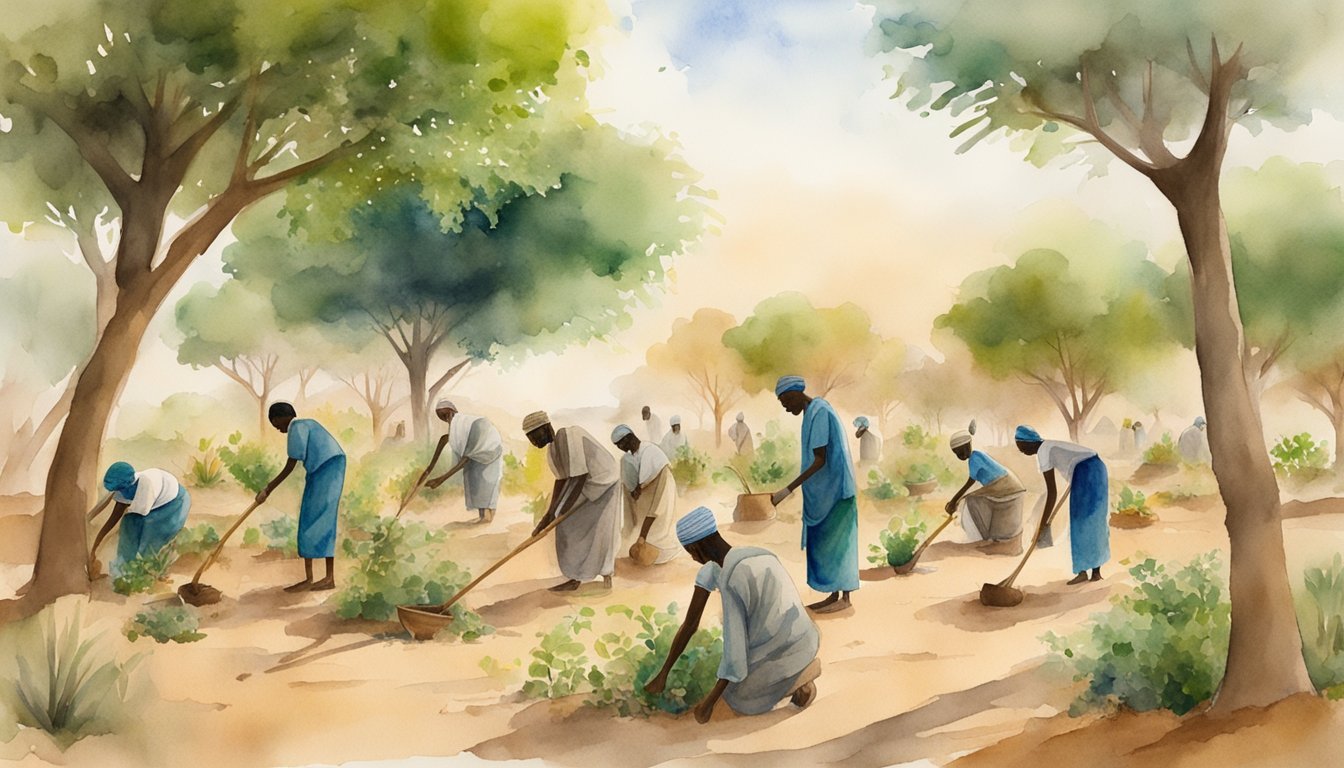Great Green Wall Initiative Overview
The Great Green Wall Initiative represents a bold and innovative project launched by the African Union in 2007. It targets the restoration of Africa’s degraded landscapes across the continent’s Sahel region—a semi-arid area just south of the Sahara desert. As an ambitious endeavor, the initiative aspires to combat climate change and ensuing desertification in the region.
Spanning approximately 8,000km from Senegal in the west to Djibouti in the east, the initiative involves a mosaic of projects orchestrated by 11 participating countries: Senegal, Djibouti, Ethiopia, Nigeria, Sudan, Chad, Eritrea, Burkina Faso, Mauritania, Niger, and Mali. The collective goal is to cultivate a Great Green Wall of native vegetation and trees to halt the expansion of the Sahara, revitalize ecosystems, and improve local livelihoods.
The program aims to transform 100 million hectares of currently degraded land into sustainable and productive landscapes by 2030. This ambitious project is not just about planting a line of trees but about addressing the underlying causes of land degradation and poverty through sustainable land management practices.
Significant achievements have been reported by the Pan-African Agency of the Great Green Wall, which oversees its progress. The Great Green Wall Initiative also supports local communities in developing sustainable land use to secure food, create jobs, and promote stability in the region.
The initiative is considered a living symbol of hope against the pressing challenge of land degradation, aiming to transform millions of lives by restoring the health and productivity of the land, improving resilience to climate change, and fostering economic development.
Impact and Collaborative Efforts

The Great Green Wall is an innovative and forward-thinking initiative with significant ramifications for both the environment and society. It leverages strategic partnerships to overcome pressing challenges while shaping cultural and future perspectives of sustainable development in Africa.
Environmental and Social Benefits
The Great Green Wall aims to combat desertification in the Sahel region by restoring fertile land and increasing biodiversity. This ambitious project promotes the natural regeneration of indigenous species and has already led to improved soil fertility, enhanced crop yields, and the sequestration of carbon dioxide to mitigate climate change. Additionally, the initiative has a profound social impact by creating green jobs, enhancing food security, and contributing to poverty reduction.
Strategic Partnerships and Support
International partners such as the African Union, United Nations, and the European Union have joined forces to back this monumental campaign. The Great Green Wall Accelerator, a recent financial mechanism, has been established to ensure consistent funding and continued success. International donors including the World Bank have pledged support, recognizing the importance of the great green wall initiative in achieving the UN Sustainable Development Goals.
Challenges and Progress
Although efforts to create an 8000km natural wonder of the world are in motion, they are not without their challenges. Factors such as climate change, drought, and conflict pose significant barriers to progress. Nonetheless, milestones are being reached with about 15% of the wall completed, transforming degraded landscapes into sustainable land use practices.
Cultural and Future Perspectives
The Great Green Wall is more than just an ecological endeavor; it is an emblematic drive towards peace and economic opportunities in North Africa. Cultural icons like musician Inna Modja have celebrated the project through art, emphasizing its potential to leave a lasting legacy. It illuminates a future where a world wonder not only grows forests but nurtures hope and supports vulnerable communities in profound ways.

